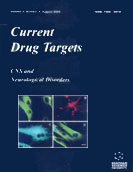Abstract
The excitatory amino acid glutamate plays a major role in nociceptive processing. Ionotropic and metabotropic glutamate receptors are expressed in relevant areas of the brain, spinal cord and periphery that are involved in pain sensation and transmission. Activation of mGlu receptors along the pain neuraxis can result in either pronociceptive or antinociceptive behaviors depending on the subtype of mGluR and its location. The data published to date most strongly support the idea that mGlu1 antagonists might act as broad-spectrum analgesics. Several studies pointing to a functional upregulation of mGlu2 / 3 in chronic pain models suggest that agonists of these receptors might also be effective analgesics in certain conditions, most notably inflammation-induced hyperalgesia and allodynia. The expression of mGluRs throughout the pain neuraxis and the differing roles of the mGluRs in each of these regions makes it difficult to predict the efficacy of mGluR ligands based on in vitro or local administration studies. Potent, systemically active compounds that show mGluR subtype selectivity will be critical to undertake more detailed analyses in animal models of pain.
Keywords: iglurs, m glu, antinociception, novel analgesic
 2
2

















